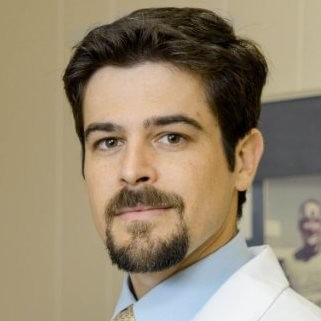
Treating Pseudomonas Infected Ulcers
Dr. Gian Steinhauser, D.P.M, FACFAS, is a Board Certified Foot and Ankle Surgeon based in Houston, TX and has seen his fair share of challenging wounds. However, two patients with Pseudomonas infected ulcers down to bone presented unique challenges.
With heavy drainage that was resistant to all oral antibiotics and several IV antibiotics, Dr. Steinhauser’s team struggled to control the infection for several weeks. The two wounds either worsened or made no progress with serial deep debridements 1-2 times per week, collagen, silver alginates, Drawtex, topical antibiotics, and wound VAC therapy. Then Dr. Steinhauser turned to Mirragen® bioactive glass to treat these difficult wounds, and things started to change.

“We started patients on more potent IV antibiotics per an Infectious Disease doctor’s recommendation, and also started Mirragen around the same time,” said Dr. Steinhauser. “I believe they both had an equal and synergistic effect on the ulcers in each patient.”
Dr. Steinhauser continued to do wound cultures every two weeks and continued to see improvements in appearance. For his patients, the results were clearly visible.
“My wound VAC cannister would fill up twice a week before Mirragen. Since then the drainage initially turned clear and now there is little to no drainage,” said patient Mike M.
For Dr. Steinhauser, the results were evident and he has started to develop an acute longing to use Mirragen whenever a wound needs to develop granulation, particularly in ulcers with severe to moderate drainage that require wound VAC therapy.
“I’ve noticed my wounds have been closing faster than with collagen,” patient Anthony P. said. “I’ve seen a decrease in the amount of drainage and I am not experiencing issues with clogging up the wound VAC, which happened when I used a collagen product.”

“I’ve already been recommending it to others and look forward to using it on more patients,” said Dr. Steinhauser. “I’d be happy to use this on myself or a family member if the need ever arose. Why? Because it just works better.”
I’ve already been recommending it to others and look forward to using it on more patients. I’d be happy to use this on myself or a family member if the need ever arose. Why? Because it just works better.”
Dr. Gian Steinhauser

In addition, Dr. Steinhauser has been impressed with the ease of storing and applying Mirragen, making it an even easier choice when treating difficult wounds.
“Application has been much easier than powdered collagen and it conforms better to wound contours and tunneling than collagen sheets or other sheeted grafts,” Dr. Steinhauser said. “It adheres to the wound better than other materials and stays in place, even when applied in hard to reach areas or spots where gravity would normally allow other materials to fall off.”